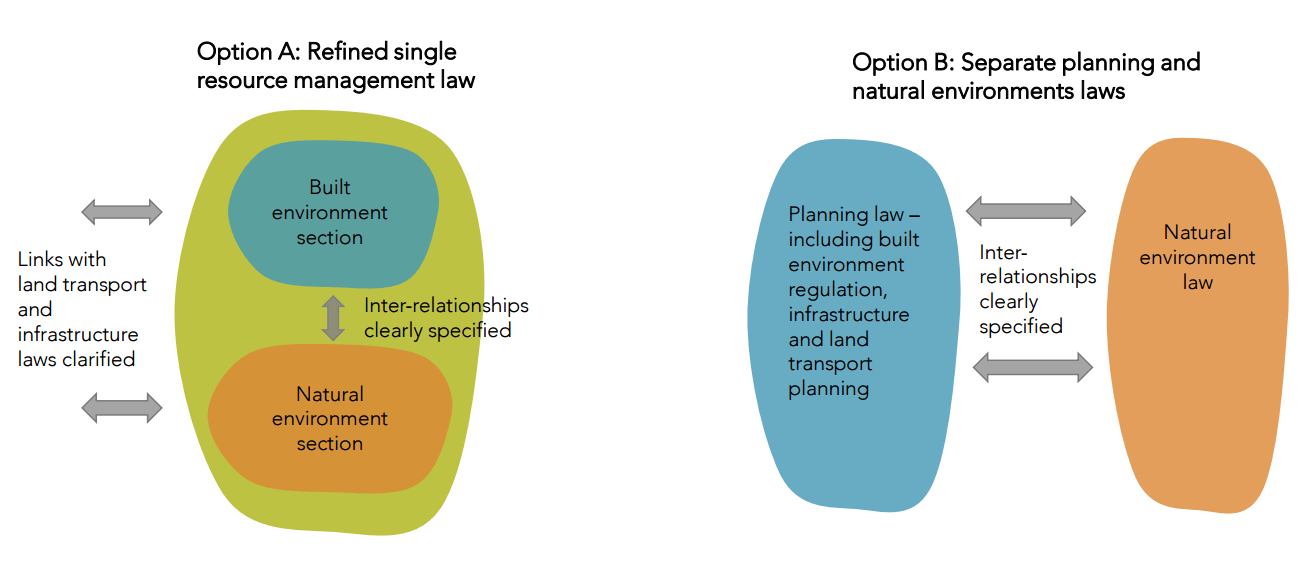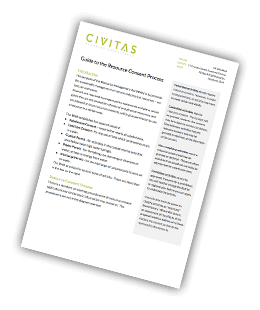Better Urban Planning
By Penny Anson
The Productivity Commission’s ‘Better Urban Planning’ report concludes that the current planning system has led to unduly restrictive rules that obstruct development, poor use of regulatory discretion (creating a lack of certainty and predictability) and unnecessary conflicts and costs. The Commission concludes that the planning system needs to be reformed.
In its draft report, the Commission sets out what a reformed system could look like. Possible future legislative models are illustrated in the diagram below. The Commission is seeking feedback on which approach would work better. Feedback is also sought on other key facets of a future planning framework.
Two Possible Future Legislative Models

Source: ‘Better Urban Planning – Draft Report’, Productivity Commission, 19 August 2016
Informed by its own analysis and submissions to the ‘Issues Paper’ (released last year and reported earlier in this blog), the Commission envisages a future framework could include:
A presumption that favours development in urban areas, subject to clear limits
By relying on pricing and market based tools rather than rules, removing subjective, aesthetic rules and policies and utilising broader zones and ‘development envelopes’ where low risk development is subject to minimal control.
A clearer set of priorities for the natural environment
Through a Government Policy Statement (“GPS”) on Environmental Sustainability (to replace the NESs and NPSs) which would have quantifiable and measurable goals against which progress would be monitored and reported on. Establish principles to guide decision makers to prioritise the environment when faced with conflicting priorities.
More robust environmental management tools
Development of standardised methods, data and assumptions with a greater emphasis on adaptive management, rather than the existing ‘predict and command’ approach.
Infrastructure pricing and funding that reflects actual costs, use and impacts
Councils would be able to set volumetric charges for drinking and wastewater and apply road charges on existing roads where it would enable more efficient use of the road network. Councils would also be able to levy targeted rates on land value changes instigated by public action (e.g.: up zoning and new infrastructure).
Rezoning and regulatory change that adapts more rapidly to the market
Land prices would be a policy and monitoring tool which drive decisions on land release, servicing and rezoning of development capacity.
A new Independent Hearing Panel (“IHP”), and so a reduced role for the Environment Court
Based on the Auckland and Christchurch versions, these permanent panels would consider and review new plans, plan variations and private plan changes. Councils would retain rights to accept or reject IHPs’ recommendations with appeal rights limited to points of law.
A narrowing of appeal rights to those directly affected (i.e. no third party appeals)
Continued public participation in the review of land use plans but limited rights of appeal to individuals or groups who could demonstrate they would be directly affected. Where the Council accepts the recommendations of a IHP on a change or review of a plan, no individual or group could then appeal.
Less rigid consultation
Council’s would be able to choose from a range consultation tools which encourage participation and allow an understanding of the trade offs involved in any decision. Only those affected by change, specific to a particular site would be notified.
Spatial plans as a mandatory part of the planning hierarchy
To align land use with infrastructure planning – with a focus on water, transport and community infrastructure provision, potentially replacing the infrastructure strategy requirements of the Local Government Act 2002 and the Land Transport Management Act 2003.
Central government as a more active partner (with the ability, in some circumstances to override local government in the planning process).
Through the ability to co-ordinate or require common land use approaches to specific uses. Central government would more clearly signal where there is a national interest and establish protocols to work through the implications on local authorities.
We will be watching this space closely given the potential impact on existing legislation, and more importantly the impact on our cities, natural resources and people involved in the planning process.
The draft report is open for submissions until 3 October, with the final Commission’s recommendations to government due 30 November.

